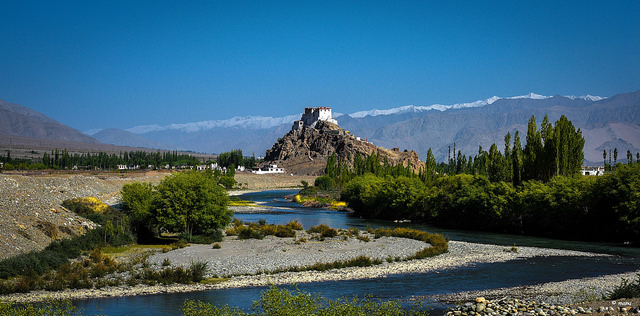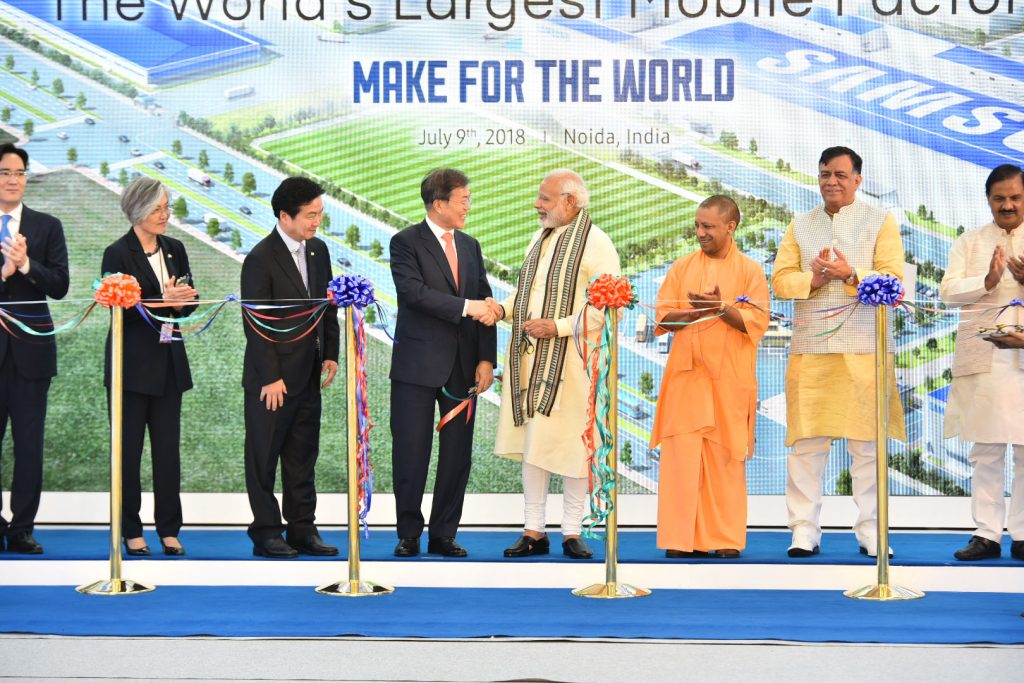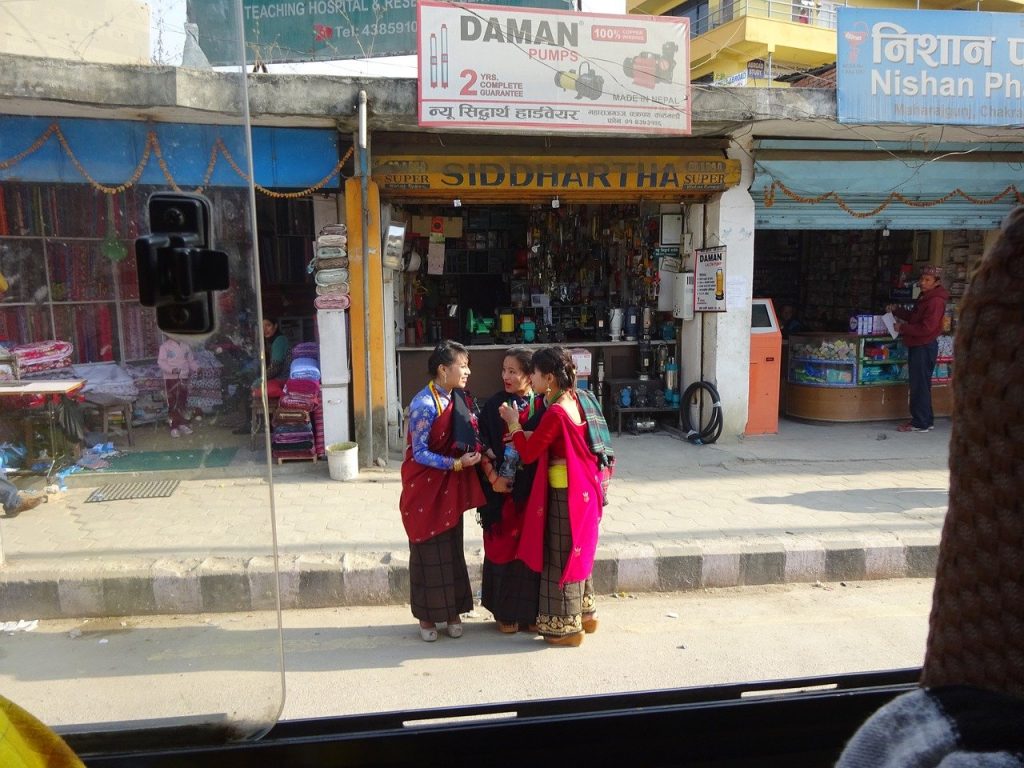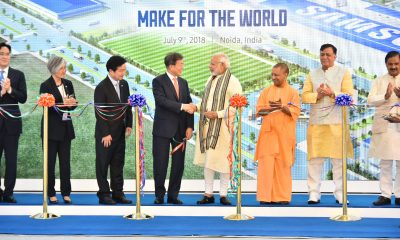
flickr/lensnmatter
Have you heard about conflicts over water? Have you ever wondered how hard it is to ensure water access in a conflicted area? Well, what I can tell is that you have certainly heard how people are dying from thirst and hunger or how they getting sick because of lack of water. What you might not know is that sometimes it is hard to ensure adequate access to water. What are the reasons? In fact, there are many, but this article will focus on one of the reasons: a conflict. We will take a specific example of India and Pakistan, explain the reasons for the water dispute and evaluate the current situation with water resources.
To begin with, do you know that it has been only seven years since the recognition of the right to water and sanitation? Before that there was a long debate whether this right exists at all. Neither the 1948 Universal Declaration on Human Rights nor the 1966 International Covenant on Civil and Political Rights (ICCPR) and the 1966 International Covenant on Economic, Social and Cultural Rights (ICESCR) address water. Not earlier than 2010, the United Nations General Assembly and the Human Rights Council have finally adopted resolution which recognized access to clean water, sanitation as human right (GA/10967).
To ensure this right is not an easy job. First of all, water situation in some regions is aggravated by its geographic position. Increasing population, the impact of economic development, climate change only makes it harder. These factors results in scarcity of fresh water. Moreover, water has another quality that makes it even more significant – its irreplaceability. Secondly, some regions are additionally involved into conflicts which make access to water more difficult. What makes it even more complicated is the fact that many river basins and aquifer systems are being shared by different states.
When something is shared, it sometimes gives precedent to a dispute. In case of two countries, it definitely does. This is the case between India and Pakistan which share the Indus basin. Currently both countries are experiencing lack of water, whereas water demand is rising and water resources of the Indus River continue to deplete. Some say that the situation in Pakistan is even worse, where the flow of river is dropping at seven percent yearly (See Baqai 2005, at 77). Thus, the river basin is giving rise for a dispute. Given the history of long-rivalry, it may result into a war.
The water dispute between Indian and Pakistan dates back to the early 20th century, but at that time it was a provincial conflict over the river to be resolved by British India. In 1947 India and Pakistan were partitioned, and the natural borders of river Beas, Chenab, Jhelum and Sutlej have been neglected. Many dams stayed in India, while their waters irrigated a major part of Pakistan. The geography of partition left the source rivers in India, and Pakistan felt threatened by its control. Moreover, the situation with Kashmir presented additional difficulties. Apart from its strategic value, the Eastern waters of Kashmir are significant for Pakistan in terms of resource access (its irrigation system largely depends on it).
Soon after the partition, a major crisis occurred when the Government of the Eastern Punjab (India) took its sovereign rights over the territorial waters and blocked Sutlej river, stopping water flow to Pakistan and causing agriculture of Pakistan severe damage. This precedent stayed in the collective memory of Pakistan, leaving fear that India could repeat its actions. India yet claimed that it was caused by Pakistani actions in Kashmir. Even today Pakistan feels insecure by its neighbour’s power over the Indus river.
By 1951 the conflict became more dangerous as both states refused to discuss the matter. That’s why, the International Bank for Reconstruction and Development (today’s World Bank) was approached to mediate the conflict. It was not until 1960 when the parties finally reached an agreement and signed the Indus Water Treaty (IWT).
To ensure the best solutions the Permanent Indus Commission represented by both sides was established. Until 2015 the meetings were held regularly once a year to resolve problems, but after that none of them happened because of the tensions in the relations of India and Pakistan.
Only in March 2017 the meeting took place with Pakistan welcoming the Indian delegation. The World Bank was asked again to intervene but it refused, leaving two countries for a face-to-face dialogue. Even though the meeting did take place, it was decided to suspend further talks.
The current water dispute between two states is shaped by the following factors. First of all, it is fast growing population rate which puts enormous pressure on resources. Secondly, there is inefficient and inadequate use of water resources as well as increased demand for water as a result of economic growth. Thirdly, water stress is becoming more severe and it is further aggravated by climate change. Apart from this, one can see a reason for a dispute in inability and reluctance of political leaders of India and Pakistan to resolve the issue. As it is heated by the public opinion from both sides, the issues continues to be on the agenda. Additionally, there are grievances caused by the IWT which influence the dynamics of the dispute.
However successful the Indus Water Treaty may be, it remains to keep low profile and failed to reach its full potential. Both parties did agree on a partition of the Rivers, yet they did not pay specific attention to the other challenging parts of the agreement such as optimization of the use of the Indus waters (Chari 2014, at 5). Further, there is little information in regards to the groundwater use. It also does not address such issues as the division of shortages during dry years and technical specifications of hydropower projects of India, particularly impact of storages on the flows of the Chenab River to Pakistan [1].
Such weaknesses of the Treaty are consequently becoming a source of tension. It gives space for different interpretation, and this is used by both countries to their advantage. The IWT lacks its dynamics towards water resource sharing and has to be adjusted accordingly. Though the Indus Water Treaty did prevent a possible escalation over the water resources, it did not foresee the future depletion of the Indus River caused by population growth, new developments in industry, and more importantly by climate change and global warming. Back into 1960 it was not well-studied or discussed as often as now, hence, it was not given required attention. That is why many call to rethink the agreement and include new pressing issues into the Treaty.
Moreover, there has been an intensive debate in India to revoke the Treaty. It was the Uri attack that laid ground for it. An Indian analyst of water disputes and geostrategic developments, Chellaney suggested India should draw a clear line between the right of Pakistan to water inflows and its responsibility not to harm its upper riparian neighbour [2]. In response, Pakistan warned that any attempts to review and/or exit the treaty would be deemed “an act of war” [3]. Regardless, the Government of India remained mostly silent. The parties are not willing to cooperate; therefore the ITW is weakened by it.
In September 2016, the Prime Minister of India, Narenda Modi, referring the ITW, said that “blood and water cannot flow together” [4]. It was also stated that only in “atmosphere free of terror” the meeting of Indus Water Commission was possible (Ibid.). India has repeatedly mentioned altering and/or exiting the ITW, although there is no exit close in the Treaty.
It should be noted that in case of a conflict the UN Watercourses Convention of 1997 gives special attention to the “requirements of vital human needs” (Article 10, part 2). International Law Commission clarifies these needs and say that there should be “sufficient water to sustain human life, including both drinking water and water required for the production of food in order to prevent starvation” [5]. This refers to the right to water of individuals, and the fact that States should respect and protect these rights.
Political tensions between India and Pakistan have worsened and made it difficult to settle even water issues. In this sense, the Kashmir conflict is inseparable from a water conflict. Many cooperative decisions were impossible because of parties’ inability to make any progress on the Kashmir question.
There is also a high level of securitization of water issues. To securitize means to construct a certain threat (for example, by means of authority). These threats are being dramatized and usually presented as a high-priority for a nation. Political leaders of Pakistan securitize this issue to the extent that it is described as a threat to national security. That makes a dispute more dangerous because water issues are being constructed as threat to a country.
Pakistan has more than once declared that if Pakistan’s need for water is used by India to pressure them, the country will consider it as a direct threat against Pakistani people. Environmental security is intertwined with the risks of violent conflict, mostly because stress in resources (e.g. water scarcity). It is also usually associated with the growing population rate and inequitable distribution of resources.
Sometimes the Kashmir dispute is also explained through headstreams of the Indus. Indian control over it likely pressures Pakistan especially during dry periods of the year. Indian Power projects in Kashmir (like Baglihar Dam) only make Pakistan to securitize water issue even more and treat it as security problem.
All in all, both countries are experiencing an enduring rivalry in regards to many aspects. This rivalry deteriorates the cooperation on water share issues. A high level of mistrust guards many countries’ decisions, that is why cooperative mechanisms usually fail. Moreover, the water issues are being regarded as a matter of national security that may escalate the situation. As water quality and quantity continues to be influenced by climate change, population rate continues to increase, demand for water continues to rise, and both countries continue to blame and accuse each other… it does not look like countries are ready to have a face-to-face dialogue over water resources any time soon. But let’s wait and see.
References
- P. Chadha, “Indus Water Treaty may not survive, warns UN report” India Water Review, 1 March 2017. Available from [http://www.indiawaterreview.in/Story/Specials/indus-water-treaty-may-not-survive-warns-un-report/2013/3#.WUUusut97IU].
- A. Parvaiz, “Indus Waters Treaty rides out latest crisis” Understanding Asia’s Water Crisis, 15 September 2016. Available from [https://www.thethirdpole.net/2016/09/25/indus-waters-treaty-rides-out-latest-crisis/].
- Dr. Jorgic, T. Wilkes, “Pakistan warns of ‘water war’ with India if decades-old treaty violated” Reuters, 27 September 2016. Available from [http://www.reuters.com/article/us-pakistan-india-water-idUSKCN11X1P1].
- Express Web Desk, “Blood and water cannot flow together: PM Modi at Indus Water Treaty meeting”, The Indian Express, 27 September 2016. Available from [http://indianexpress.com/article/india/india-news-india/indus-water-treaty-blood-and-water-cant-flow-together-pm-modi-pakistan-uri-attack/].
- International Law Commission, “Draft Articles on the law of the non-navigational uses of international watercourses and commentaries thereto and resolution on transboundary confined groundwater” (1994) Part II Yearbook of the International Law Commission, 89. Available from [http://legal.un.org/ilc/texts/instruments/english/commentaries/8_3_1994.pdf].
India
Government Changing Syllabus to Include Sikh History in India

Chief Minister of Uttar Pradesh, most populous state in India, has announced inclusion of Sikh history in the state syllabus. Students of all schools under UP State Board will see the new chapters. The announcement came when Chief Minister Yogi Adityanath (BJP) was observing Sahibzada Diwas.
Why do we Observe Sahibzada Diwas?
Sahibzada Diwas marks the martyrdom of four ‘sahibzada’ (or sons) of Guru Gobind Singh (10th Sikh Guru) and his mother Mata Gujri. In the year 1705, Mughal Emperor Aurangzeb had ordered torturing of youngest sons of Guru Gobind Singh aged 5 and 8. He later executed the little sons by burying them alive into a wall. The reason for this act was that they refused to convert to Islam. Soon after this event Guru Gobind Singh’s mother, Mata Gujri also martyred her life under Aurangzeb’s captivity. The cause of her death is still unclear. Guru Gobind Singh’s other two sons martyred their life in the Battle of Chamkaur Sahib. Thus the 10th Sikh Guru, Guru Gobind Singh had lost his whole family by 27th December. This is an important event in the Sikh history in India and UP Government is finally keen on observing Sahibzada Diwas every year.
Why UP Government is Changing the Syllabus?
Soon after the independence of India in 1947, the school education came under tight grip of far left and communists. Most of the Indian history in the recent past has been written by Romila Thapar and Irfan Habib. They have close ties with left wing ideology and Irfan Habib has delcared himself as Marxist. They wrote history text books by either phasing out sections of Indian history or diluting certain events. The motivation to soft alter the history has been to propagate left-wing/communist ideology. Historian Koenraad Elst once highlighted that Romila Thapar is comfortable neither in Sanskrit nor in Farsi language. The knowledge of these two languages is a must to understand India’s history.
In the recent years, various public opinions have gained momentum to rewrite Indian text books to include more content on Indian rulers and native ideas. Currently, Indian text books mainly teaches about foreign rulers of India such as Mughals and British.
With this announcement of inclusion of Sikh history in history text books, the government is bringing historical facts in mainstream.
27th December as Real Children’s Day
Chief Minister Yogi Adityanath has also reached out to the Education Minister to declare Sahibzada Diwas as Children’s day. He further added that “The history of Sikh gurus will be a part of the syllabus. Apart from this, we should observe December 27 every year as Sahibzada Diwas in all schools. Today is the day to pay gratitude to the sons of the Guru and mother who martyred their lives for the motherland, country and religion.” Yogi Adityanath also said that “No society can move ahead if it forgets history. The Sikh society is known for its hard work. The Sikh gurus sacrificed their lives to defend the Hindu religion. The country will always remember this.”
Yogi Adityanath added that learning about the sacrifices by Sikh Gurus would inspire future generations to dedicate themselves into nation-building. He emphasized that we should make future generations realize that India and Indian culture was safe because of sacrifices of Sikhs.
What Should We Do On Sahibzada Diwas?
Sahibzada Diwas should be an important day for every Indian regardless of their region, culture or religion. On this day, we are in the Holiday mood as it falls right between Christmas and New Year’s eve. However, we should remember that a Guru and his entire family sacrificed their life for the well being of India and the idea of India.
On this day we can fast, do sewa (service), visit a nearby Gurudwara and sleep on the floor at night.
China
Nepal Hindu Rashtra: Time to Wrap Up Communism?

Nepal abolished the Constitutional Monarchy in May 2008 and declared itself as a Federal Democratic Republic. There was a new hope in Nepal as it was becoming world’s newest democracy even though it had dissolved the Hindu Rashtra. However, the democracy in Nepal immediately got into the tight grips of leftists and communists backed by China. It has been almost 12 years since monarchy was abolished in Nepal. Interestingly, the Himalayan country has already seen 11 Prime Ministers in this period. Thus, leaving the Nepalese people still yearning for good and stable governance.
Re-establish Hindu Rashtra
As the political instability is growing in Nepal, people are demonstrating concerns about the future of the country. In fact, Nepalese citizens are unhappy with frequent interference by China and India influencing its unstable communist regime. More voices are now growing in support of reinstating the Monarchy and declaring Nepal as world’s only Hindu Rashtra (which by default offers full religious freedom to other religious minorities as per Hindutva concept of Sarva Dharma Sama Bhava – all paths lead to one).
Former Deputy Prime Minister of Nepal, Kamal Thapa said that if political parties do not recognize the seriousness of reinstating the monarchy, then the country will head for a period of darkness. “Recently, we’ve had high-ranking officials from India and China come to Nepal to try and solve problems within the ruling party,” he said. “We cannot let others dictate what we want to do.”
Communist Party All Set to Suppress Protests, By Force
Kamal Thapa has firmly demanded an all party meet to discuss reinstating of monarchy. Throughout the month of December, 2020 Nepal has seen anti communism protests across the country in support of reinstating the monarchy and Hindu Rashtra. Most importantly, the demand has become a nationwide mass people’s movement. So much so that the communist regime had to send a directive to 77 districts in 7 provinces. The directive suggests suppressing the protests by force. Nevertheless, Rashtriya Prajatantra Party and other royalist groups have ignored this threat from the communist regime. Protester groups have pledged to strengthen the protest in the coming weeks.
Nepal: Demonstration held in capital Kathmandu, demanding restoration of monarchy in the country. pic.twitter.com/TFjmKu9U9Z
— ANI (@ANI) December 5, 2020
Role of China – Hope for Communism in Nepal
China’s ambassador to Nepal is known to have very close relationship with Nepalese Communist regime. In fact, She has been super effective in tilting Nepal’s posture towards its ideological partner, China. One of her greatest achievements in 2020 was artificially manufacturing a border conflict between Nepal and India. Consequently, souring relations between the two Hindu majority nations. In addition, she managed to silence Nepal’s communist government after China took one of Nepal’s border villages under its control. However, recent political turmoil in Nepal and a renewed demand for reinstating of Hindu Monarchy is showing that the situation is now out of Chinese hands
Role of India
Year 2020, was not a good year for India and Nepal relations. India was busy in controlling domestic Covid cases. On the other hand, China had launched an invasive campaign into Indian territory. In addition, India is always busy with Pakistan on its western borders. However, the surprise came to India when China was almost successful in creating a new border tension between India and Nepal.
Those who do not know about Indian government should note that the current ruling party in India finds itself ideologically opposite to communism. This further creates differences between the two countries.
Communist party in Nepal has blamed India for supporting the ongoing anti communism protests in Nepal. However, former advisor to Nepal’s PM has suggested there is no proof that India is fueling pro Monarchy, anti communism demand in Nepal.
Nevertheless, There are certain influencers in India who have, in their personal capacity, expressed support for reinstating the Hindu monarchy. Yogi Adityanath, who is the Chief Minister of an Indian state bordering Nepal, said in 2015 that Nepal should declare itself a Hindu Monarchy. Readers should note that in 2015 Yogi Adityanath was not the Chief Minister yet. However, today he is not only popular in south of Nepal, his popularity is growing in Nepal as well.
Will The World See the first Hindu Rashtra?
It is difficult to answer this question at this moment. However, Nepalese communist government could not resolve the political instability and in December 2020 Nepalese government dissolved the parliament. Nepal will see next elections in April – May 2021. Hopefully, the world will see Nepal’s 12th Prime Minister in 13 years or may be a Hindu King? Royalists and protester groups have expressed confidence in winning next elections. We have our eyes on Nepal for updates.
India
Humanity Endures During Coronavirus Pandemic

Photo by Press Information Bureau, Government of India
The world changed exponentially since the pandemic broke out. We changed too. Emotions are running high. We have learnt to take one day at a time and have stopped expecting changes to happen overnight.
“COVID19 is menacing the whole of humanity – and so the whole of humanity must fight back”
A clarion call from United Nations Secretary-General António Guterres is a call to unity and solidarity. Already plagued by natural/manmade disasters and wars, many countries seem to bite the dust for want of resources in the fight against the virus. Warning each other against complacency is appreciable but never a blame game to cover up a dysfunctional response. Not all update themselves on the governments, new economic policies and R&D on Covid vaccine. Many we come across seem to be making wise individual choices. No matter how badly the tiers of government fail us, there will always be thousands of people working to make things better. Besides, finding reasons and faults on policies for the spread doesn’t help. A virulent strain of flu had managed to spread within a few months to the remotest corners of the world infecting half a billion people – more than a quarter of the human species in 1918 long before the current age of globalization.
Separating, alienating and forswearing the endless moments of contact that knit society together thrust us into frightening new realities. The good is still there. Social distancing is nothing but taking a step back to literally give breathing space to others. Going by news & views, we understand that amid concerns of rising numbers of positive cases in frustrating circumstances, acts of kindness and solidarity are burgeoning. Yes, it’s been extremely sad and sobering to watch this all unfold, but watching people share resources and supporting one another in every conceivable way has made us feel more connected to our local communities. Whether singing a song together out on balconies, getting groceries for the elderly or calling a friend to alleviate anxiety and fear, each one I know play a part and take comfort in a sense of togetherness. We are steadily aware of our limitations yet don’t hesitate to free our wells of compassion. Do we think twice and thrice to make an online contribution to save the lives of people we don’t know and will never know!
Sadly, it has taken an invisible virus to help us belive once again that we are strongest only when we have the welfare of others in our mind. Halfway through quarantine and self-isolation a phone call, a kind word, an opportunity to reach out, a breeze, bird calls, one good news and loss of a loved one, we are hit with the necessary humility and awe we ought to feel and appreciate just how beautiful our world is and precious life is.
Post pandemic recovery will be better and bigger if life goes on with this beautiful idea, of humility, inwardness – as an ethical relationship, for the sake of others. For better or for worse, we have learnt that one can’t be an island unto himself. Lives are intertwined and are bound together. We, humans produce more rubbish than any other species. The growth in the human population is part of the explanation, but cannot account for all of the extra rubbish, a result of haste and greed both which almost skinned humans of humanity.
Unity among countries must ensure that all countries are equipped to trace, isolate and treat people infected by COVID-19. Only a global effort can avoid the collapse of any country’s medical system. Sanctions that affect health care should never be imposed. Development in one part of the world should not rob another country of it’s resources. Humanity gains the upper hand over invisible predators through the sharing of reliable scientific information, global solidarity, vaccinations, antibiotics, improved hygiene and a much better medical infrastructure. Today,it doesn’t take too much to figure out that global sharing and caring is the best defense. The Jing Si aphorism, “Good actions require everyone’s cooperation. So let’s not cling to personal biases” holds good for all times.
Stories of good samaritans are aplenty. To know humanity is still alive and kicking and is at it’s best when united assures us that we’ll come out of this “abnormal” time with a new normal. In their own unique ways, humans respond to protect life and health and ensure respect for fellow beings. ‘single-nucleotide polymorphisms’ are no joke. From handing over meals, survial kits, medicines, home made masks to calling on an old couple across the street, everything is humanity in action and it is the power of this humanity – humane behaviour towards other humans – that we seek to celebrate, improve and increase, especially during crucial times. Remember “A person with a generous heart and compassion for all beings leads the most blessed life”.
With thousands of migrant workers taking it on their chin, vehicles filled with food and ration along highways reach the needy and stranded and canteens serve free food. Rays of sunshine! We see through hypocrisy and deceptions, hear excuses for inefficiency, inadequacy and inflexibility and within the tumult and uncertainty we are doing much, much better in life than we thought we can. Quietly. Kindly. Gently. Being able to spare a part of us to help someone live is worth being thankful for. ” Giving with an expectation for return brings misery”. May we give generously, but don’t guilt ourselves if we can’t. If we have nothing left to spare, let’s go slow and kind.
The world is being taught a lesson, the harder way. This lesson is not about rich and powerful versus poor and powerless but about leadership that treasure the common wealth and common good, above private greed and profit and above protecting the privileges of a handful elites.
None of us are actually going anywhere. Might as well stay. The conclusion we draw from this crisis is that all humans matter equally, that we need to give a hand, raise one another, flourish or perish together- no matter what our limitations are, we’re capable of a great deal. This virus backlash is nothing short of a fleeting lesson to all leaders about how sane, humane societies should function all the time. Those who regard themselves as wonderfully favored of leadership, power and pelf are called to do great things. Anything that constantly arise to cause conflicts or disunion must be questioned, criticized, denounced and judged.
Be it a forced contemplation of our mortality or a sudden urge of self denial or an awareness of the passage of time and life, this screeching halt is proof that humans are designed to be more productive when connected, even in isolation. So, not all hope is lost. The time has come when we must know for ourselves why we believe in humanity as we do.
“Do something good for somebody today; the people who are trying to make the world worst aren’t taking days off.”
Gestures to honor humanity are varied, aplenty. A flypast in India is a cruel joke on the already tumbling down economy and on the selfless humanitarians who spare nothing to reach out. We can only wish the trail of showered petals, if showered will guide the departing victims of COVID19. Flying past/over ground realities is a highly irresponsible act of governments. Also, a misuse and mismanagement of meagre resources.
Was it a premonition that urged saint Thiruvalluvar, celebrated Tamil poet and philosopher to get on with kural 578 which when translated into English goes as
” The world is theirs (Kings) who are able to show kindness, without injury to their affairs, (administration of Justice).
-

 Business10 months ago
Business10 months agoHow To Future-Proof Your Business With The Right Tools
-

 Travel8 months ago
Travel8 months agoTravelling from San Antonio to Guadalajara
-

 Business11 months ago
Business11 months agoWhat are EDC products, and why should you always have them?
-

 Travel5 months ago
Travel5 months agoTravel wellness tips for a healthier and more enjoyable journey
-

 Europe3 months ago
Europe3 months agoRecent Books by Boaventura de Sousa Santos: Law, Colonialism, and the Future of Europe













